Class 105/6 Cravens 2 & 3-car DMUs
Variations
Batch One
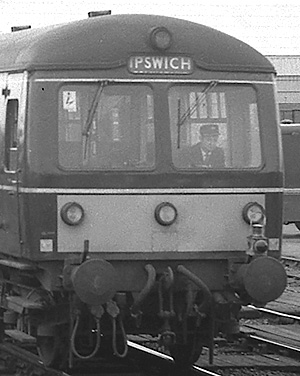
This batch comprised 36 two-car sets, the first 31 for the North Eastern Region in two different cab styles and five for the London Midland Region in a third style.
Style One 50359-69/75-89 and 56114-24/30-44
These had four marker lights, one on the cab roof dome above the destination indicator, one above either buffer, and one centered in-between those.
The type of marker light used on DMUs was standard item across almost all DMUs, and included a slot around the lower circumference designed to hold a (red) lens. Hull at one point experimented with what could have been a set number on a disc in the slot of the lower centre lamp.
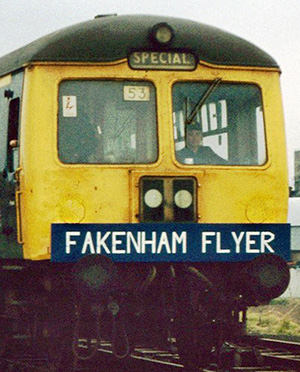
Style Two 50370-4 and 56125-9
Five sets, bizarrely in admidst the batch of thirty-one NER sets, were delivered with a two-character route indicator in place of the lower centre light. When delivered these were not used at first and they were wound to the white section. As they could be illuminated, they were rumoured to be a new form of warning panel!
The five sets also had the two outer lower lamps were crudely plated over with a circular disk, seen in the image just above the headboard on DTCL 56125.
These ten vehicles had the LMR-style 2-character route indicator, as in the 'Fakenham Flyer' image.
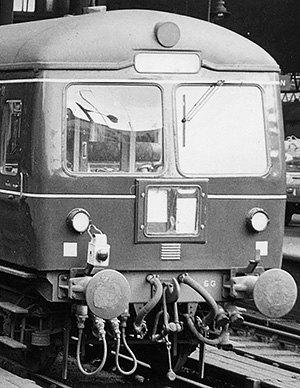
Style Three 50390-4 and 56145-9
The five LMR sets from batch one only had two lower marker lights, the roof dome was still formed to hold one, but this only held a blanking plate.
They had the LMR style of two-character route indicator, which became the standard on all later LMR Cravens units.
Batch Two
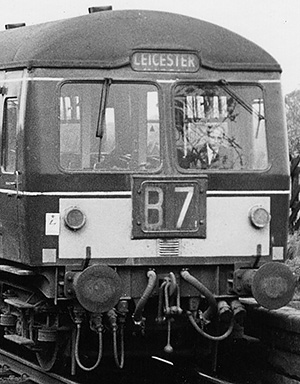
This batch comprised power twins and 3-car sets for the London Midland Region.
They had the LMR style of two-character route indicator and only two marker lights, and no longer any provision for the top one.
The design of the brake compartment in the DMBS was changed by repositioning the twin loading doors away from the rear of the vehicle to a point over the bogie centres, with the addition of an extra van window at the rear of the brake compartment.
The centre cars were virtually identical to the DTC but without the cab. The DMS was also based entirely on the DTC but was of course powered.
Batch Three
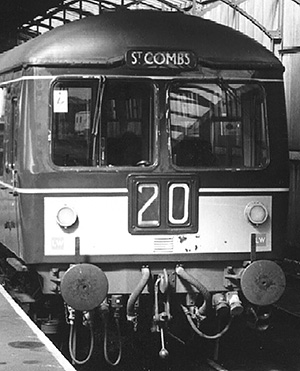
The cab front on these vehicles changed from batch two only by switching to the ER-style style of route indicator which was split into two rubber mounted glazed sections, this became the standard on all the remaining vehicles, which were for the N/ER & ScR.
Batches Four
These kept the ER style twin glazed sections on the route indicators but reverted back to the original brake van layout of batch one.
Van Styles
All the guards vans were the same length, 16' 2 7/8", but there were four different variants when new. The double doors on vans had one door that opened inwards, it would have the droplight (drop down window) and be shorter of the two to clear the floor as it opened. The other opened outwards, would not have a window and a larger door handle that normally rested around the four/five o'clock position.
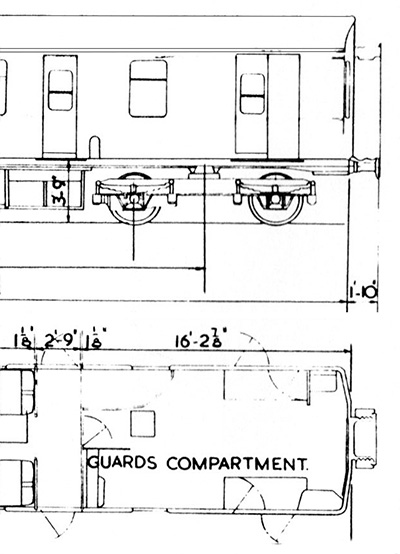
Batch One - Diagram 525
This van had one window on each side, and on both sides the inward opening door was on the left side (when facing the vehicle from the outside).
The guard's seat can be seen on one side of the gangway (upper right of the image) - there were windows on the inner end of the vehicle.
These sets were for the North Eastern Region, and there seems to be a corner cage (upper left of the image) in common with other NER vehicles. The rectangular section just inside the double doors is likely where a metal plate was.
The square in the middle of the floor would be the hatch for access to the final drive (for maintenance purposes, not anything that the guard would normally need access too).
The door from the passenger area is shown as via a swing door.
Sample images - driver side, other side.
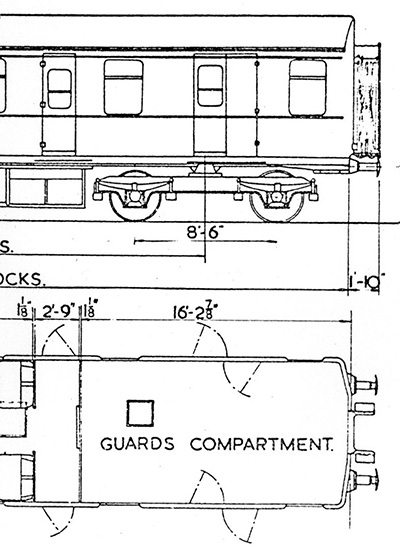
Batch Two - Diagram 528
The big change is that the double doors have been moved inwards towards the centre of the vehicle and an extra window added to each side at the end of the vehicle.
The diagram gives us little other details in the internal features of the van, but the layout can be seen in the works photographs.
As with batch one / diagram 525, the inward opening door is on the left side on both sides of the vehicle.
The access from the passenger area is now shown as a sliding door, a change which was retained on the other diagrams.
Sample images - driver side, other side.
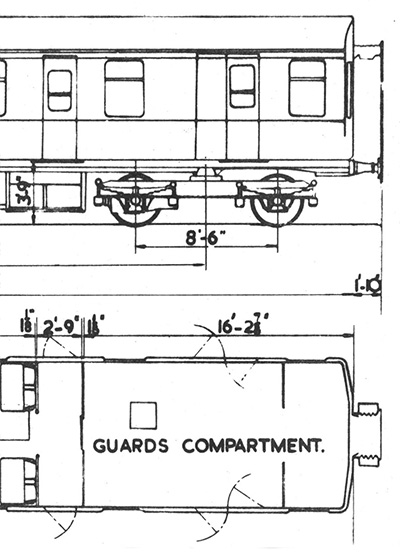
Batch Three - Diagram 532
These Eastern Regions vehicles were very similar to the Batch two vehicles, but on the drivers side of the vehicle (the bottom side in the image) the inward opening door was now on the right side.
The illustrations of the diagrams (528 and 532) differ slightly as 532 shows partitions to the right side of the double doors, but know from the works photographs of diagram 528 vehicles that they had them too.
Sample images - driver side, other side.
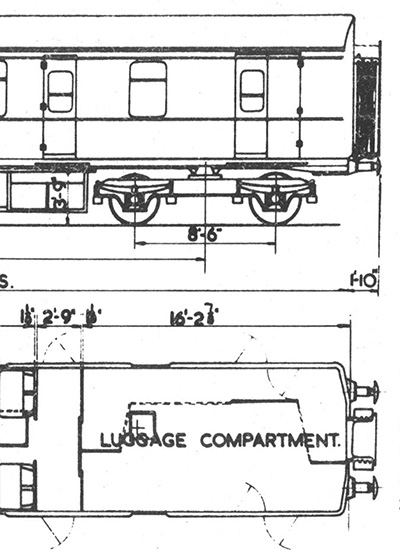
Batch Four - Diagram 548
On these the external appearance reverted to that of batch one / diagram 525, with the elimination of the additional window.
Inside, the diagram shows that a security cage was now fitted. It was shaped to allow the public to pass through.
Despite what is displayed on the diagram, photographs show that on the drivers side the inward opening door was on the right hand side, as it had been in batch three.
Sample images, batch four - driver side, other side, batch five - driver side.
Route Indicator Styles
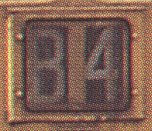
London Midland Region Style
The LMR type, with one piece of glass covering both blinds
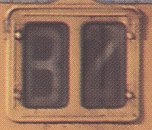
Eastern Region Style
The ER type, with each blind glazed separately. Also used on the ScR vehicles.
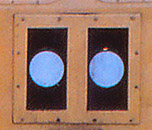
Replacement Style
At least two vehicles (50371 and 56127) from the batch one / style two batch has this style of route indicator in the blue livery 'domino' (white dot) era.
Modifications
The units that were intended for the M&GN lines in Lincolnshire and Norfolk, routes that were single lines under token operation. To avoid damage to the bodywork when the driver was catching the tablet when moving, when the tablet would swing back and hit the bodyside, a rubber pad was fitted between the cab doors and the first saloon window.
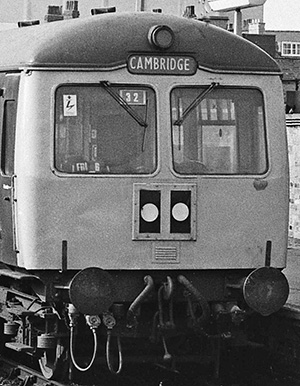
At least two vehicles (50371 and 56127) had a different style route indicator in the blue livery 'domino' (white dot) era, presumably after accident repairs. 50371 is shown in the image.
In the same images of these two vehicles the circular plates over the lower outer marker lights are missing, possibly the lower cab fronts have been completely replated.
Once the route indicators were no longer used there were a variety of random style found. Some had the blinds wound to white, some had two white dots on black in place of the blinds, some had them painted over in yellow, some were crudely plated over. In time many were properly plated over, and by 1982 all units left in service carried just the two marker lights.
When new in the lower centre of the cab end there was an air intake grille. Over the years these could be seen with smaller grilles, moved off-center, or removed and the area plated over.
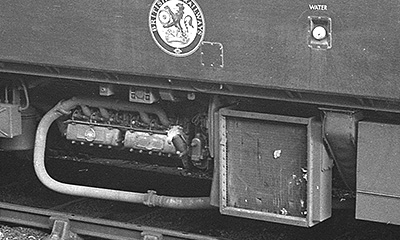
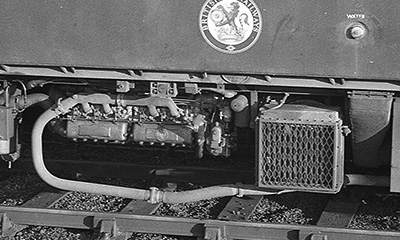
Radiators
At some point at least some of the power cars working out of London Kings Cross were fitted with a larger radiator fitted. This is shown in the first image. A standard radiator is shown in the second image for comparison.
Note also the different arrangements of the water (coolant) filler on the bodyside.
Both images were taken in October 1967.

Stratford Headlamps
Circa 1981 several Stratford allocated vehicles had two headlamps fitted adjacent to the marker lights. These vehicles included at least 50362, 50363, 50364, 50366, 50369, 56122, 56133, 56421 and 56422. The image shows headlamp fitted 54421 at Romford on 13-7-84. On Tour With the Class 13 Army.
One vehicle — 53361 — ran for several years with wires coming out the cab where these headlamps would have been (as seen in this image) but I have not found any images showing it with headlamps so it may have had the work on adding them started then abandoned.
By 1985 the lamps were removed but the brackets were left in place.
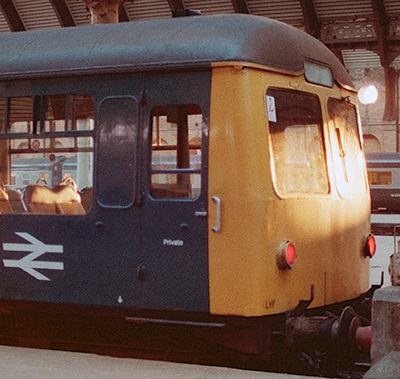
Bounce Panels
One alteration to some vehicles (such as 51296-51301) was the addition of a rubber panel just behind the drivers door. This was to protect the bodywork (and no doubt the passengers who'd be alarmed by a loud bang) during token exchanges on the move when the tablet would swing back and hit the body.
When first added they were self-coloured - white or maybe a light grey. When vehicles were repainted into blue the panels would also be painted in the body colour, as seen in the image of E51299 at York by Jonathan Hazen.These panels were also fitted to other DMU types in East Anglia.
Summary
Orders
Description - General
Description - Variations
Description - Interior
Works Photos & Drivers Inst.
Diagrams
Numbering
Liveries
Operations - Batch One
Operations - Batch Two
Operations - Batch Three
Operations - Batch Four
Operations - Scotland
Accidents
Decline
Parcel Use
Other Non-Passenger Use
Images
Details about preserved Class 105s can be found here.


